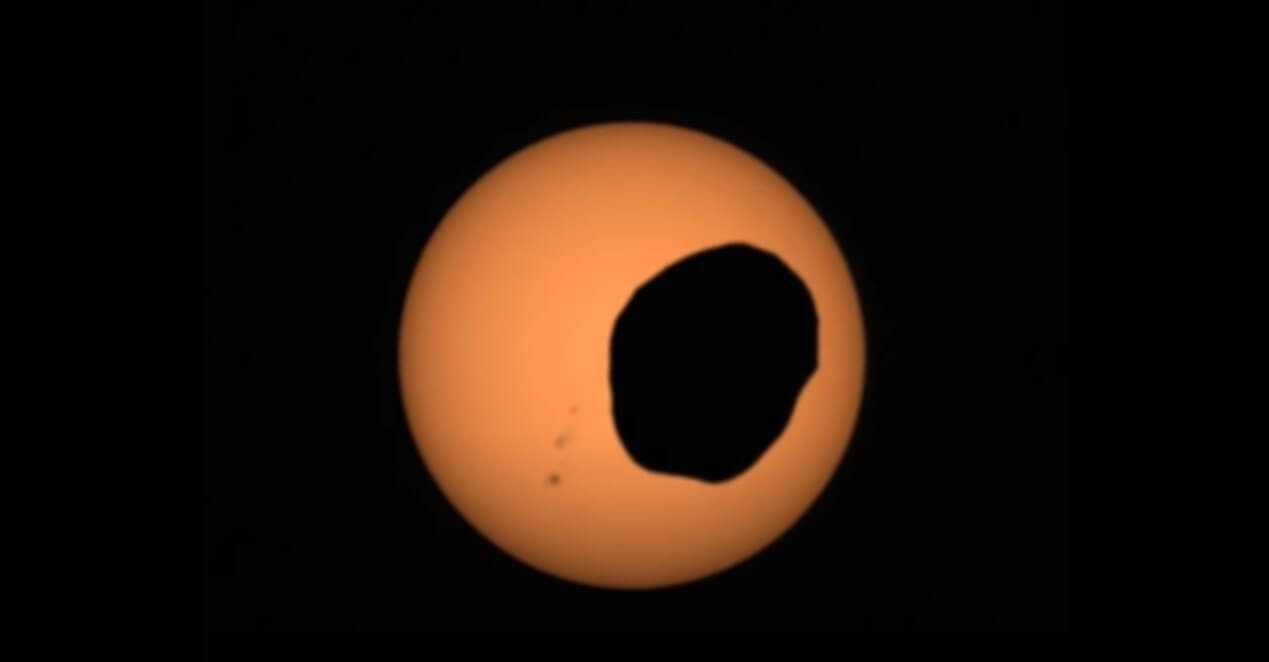
Stunning New NASA Video Reveals Dramatic Solar Eclipse On Mars
Whoa!
By Nancy Atkinson | Universe Today
The Perseverance rover watched as the potato-shaped moon Phobos passed in front of the Sun, from the vantage point of Jezero Crater on Mars.
Perseverance used its high-resolution Mastcam-Z camera system to shoot video of Phobos, and NASA says the result is the most zoomed-in, highest frame-rate observation of a Phobos solar eclipse ever taken from the Martian surface.
The stunning eclipse took place on 2 April 2022 (Earth date, of course) and the eclipse lasted a little over 40 seconds. That means this video is very close to what Perseverance witnessed in real time.
The time it takes for Phobos to eclipse the Sun is much less time than a typical solar eclipse involving Earth’s Moon, since Phobos is about 157 times smaller than our own Moon.
The Mastcam-Z has special solar filters that allow it to stare directly at the Sun. The video is of such high resolution, that even sunspots are visible on the Sun.
Truly fascinating. I zoomed in with my Mastcam-Z camera on a Phobos solar eclipse. This detailed video can help scientists on my team better understand the Martian moon’s orbit and how its gravity affects the interior of Mars, including its crust & mantle. https://t.co/jVdJ4UwhDx pic.twitter.com/q45HwKwLIS
— NASA's Perseverance Mars Rover (@NASAPersevere) April 20, 2022
Scientists say that each time these eclipses are observed, it allows them to measure subtle shifts in Phobos’ orbit over time.
The moon‘s tidal forces pull on the deep interior of the red planet, as well as its crust and mantle, and so studying how much Phobos shifts over time reveals something about how resistant the crust and mantle are, and thus what kinds of materials they’re made of.
All I know is, this is incredibly awe-inspiring.
This article was originally published by Universe Today.
